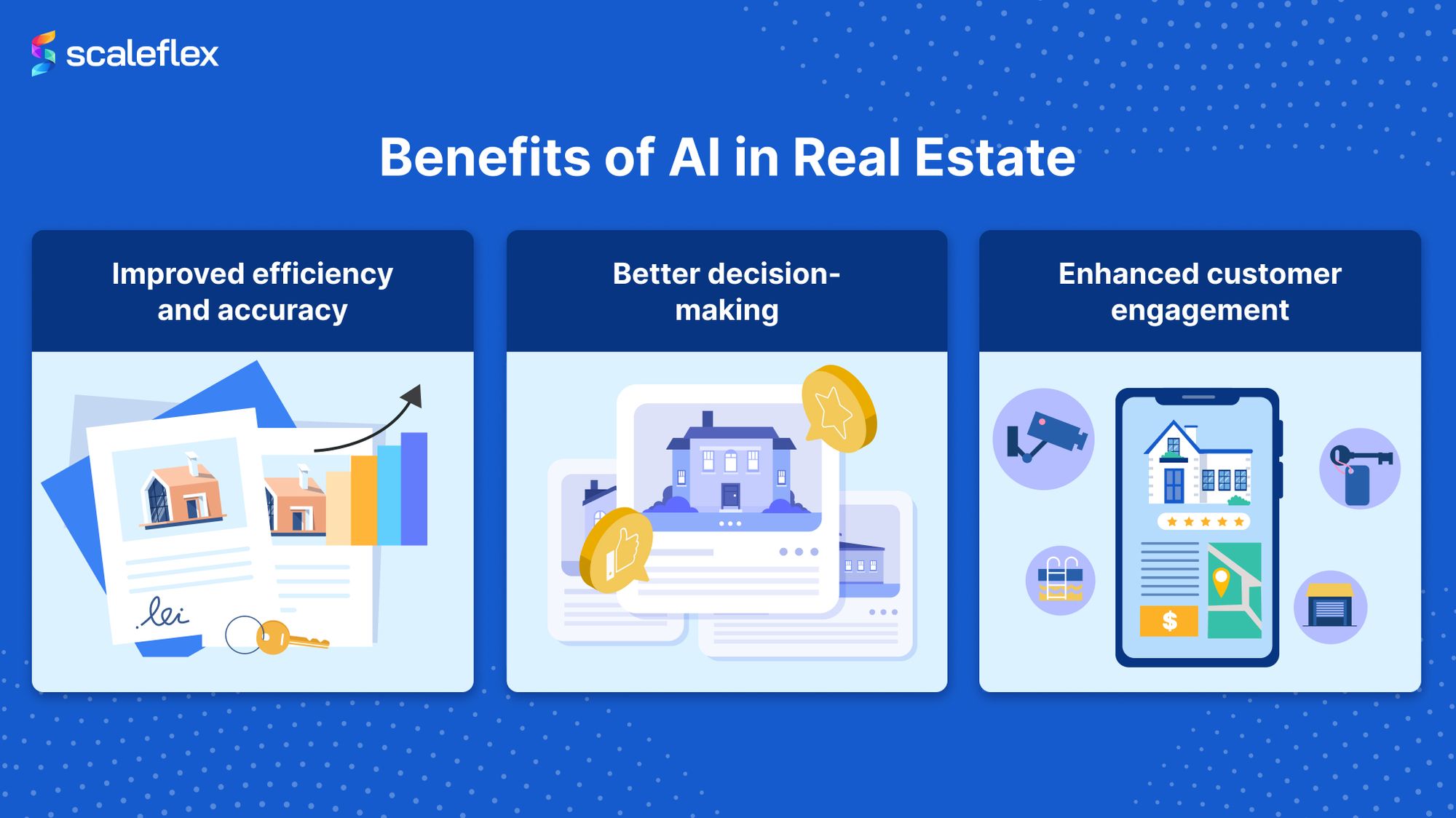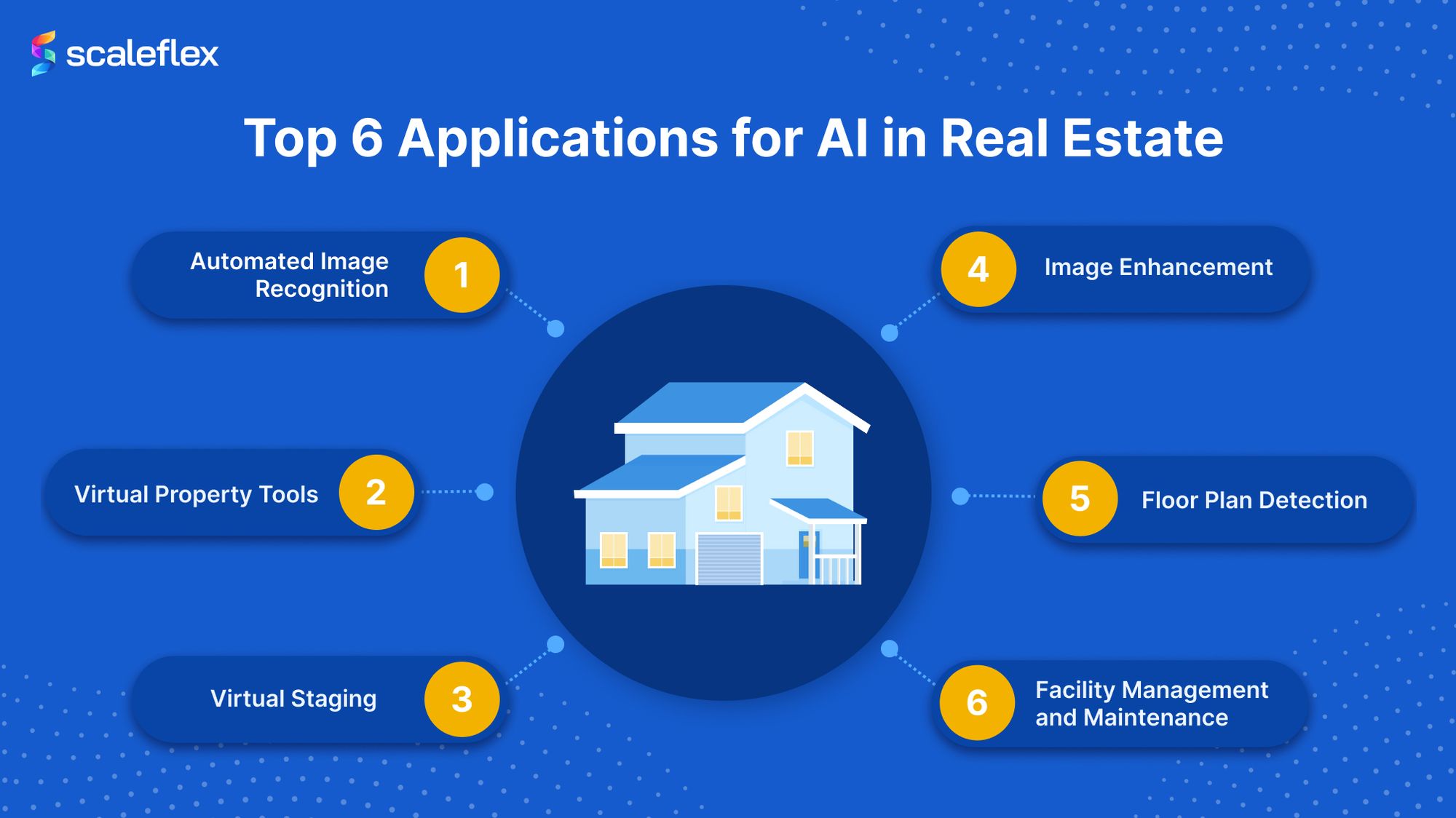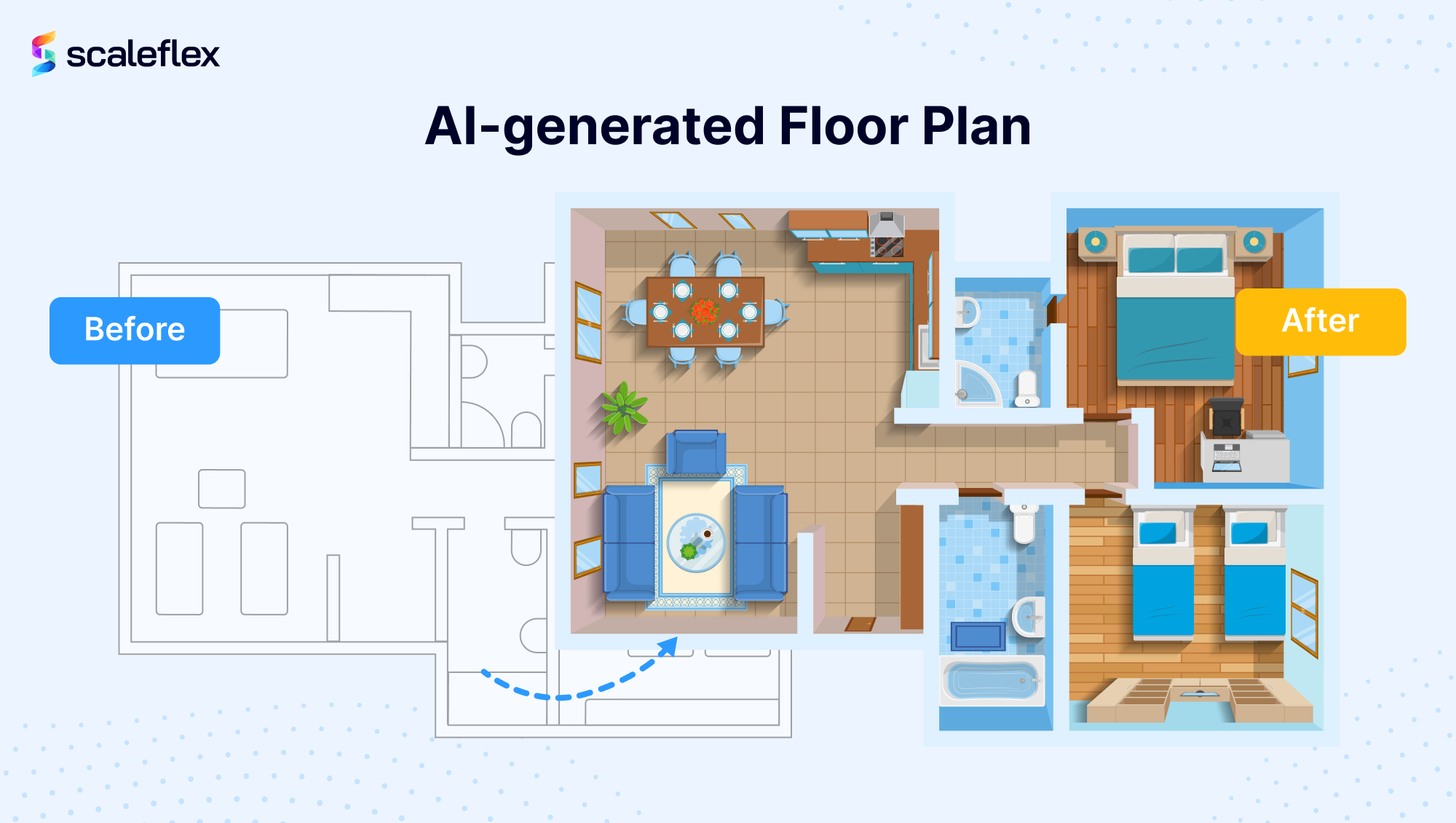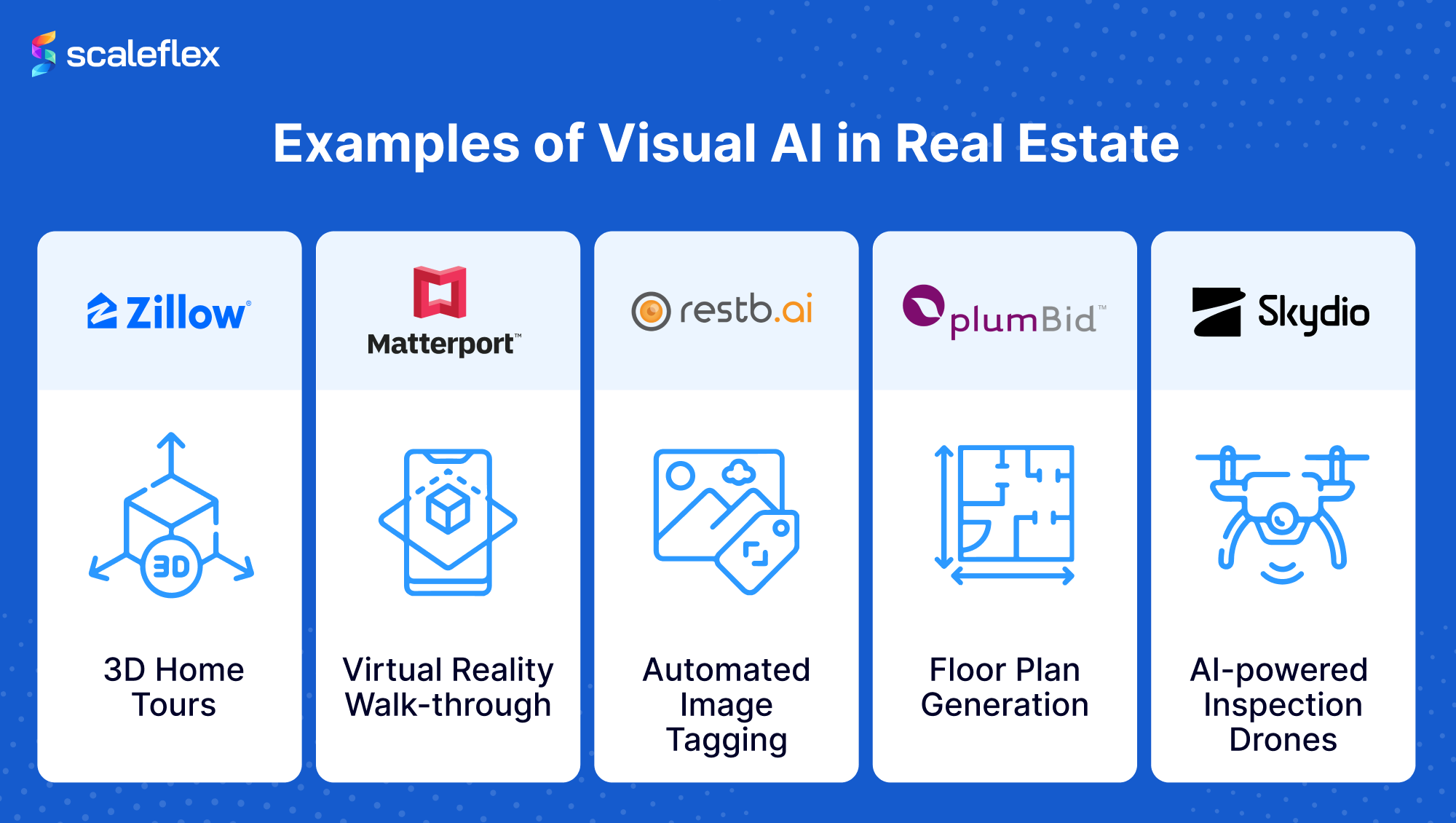Visual AI in Real Estate: Most Common Applications and Benefits
The landscape of real estate is ever-evolving, as are our societies, communities, and housing needs. In this diverse sector, Visual AI has completely transformed the way properties are presented by brokers and perceived by potential buyers.
In this article we aim to dig into and demystify some of the most common applications and benefits of Visual AI in real estate. To offer a glimpse into the depths we’ll be diving into: how cutting-edge algorithms and computer vision can be harnessed to engage clients with compelling visualizations, we’ll see how crucial processes can be automated for maximum efficiency, how automation in real estate is being driven by artificial intelligence, and how, in general, real estate AI can create better informed, data-driven decisions.
Visual AI is part of the field of Computer Vision, one of the most important branches of AI currently used in the real estate industry. It enables property image recognition, categorizing listings and enhancing search precision for buyers. It facilitates virtual property tours and immersive experiences via augmented reality applications, which permits potential buyers to remotely explore properties that spark their interest. So, let’s look into how these varied capabilities of Computer Vision or artificial intelligence in real estate are reshaping the sector.
What are the Benefits of AI in Real Estate?
Before going through the different applications and concrete examples, we will dig into the specific benefits the sector can reap from this game-changing new technology.

Visual AI improves efficiency and accuracy in real estate
Since Visual AI is capable of automating tasks, such as image recognition and property valuation, it can ensure consistent and error-free results that humans cannot. Furthermore, the automated inspections conducted by drones that are equipped with Visual AI tools reduce manual effort, enable real-time data collection and much more precise identification of issues and root problems. Lastly, since it is able to streamline different tasks, Visual AI allows real estate professionals to focus on strategic aspects of their work, therefore boosting productivity and operational efficiency.
Visual AI enables better decision making in real estate
Since Visual AI runs through vast databases in seconds, it can provide actionable insights for predictive analytics and help professionals in forecasting market trends, which can drive informed investment decisions. Visual AI can enhance strategic planning by processing different property data, and facilitate quick adaptations for professionals to sudden market fluctuations or changing customer preferences. Lastly, the machine learning algorithms that are powered by Visual aI empower real estate agents to hand out personalized recommendations, helping buyers find properties that align more closely with their specific needs and preferences.
Visual AI enhances customer engagement in real estate
Immersive experiences foster genuine interest and engagement, which is why virtual tours created thanks to Visual AI have the ability to captivate potential buyers. In other areas of customer care, Visual AI-driven chatbots, an area of conversational AI in real estate, are capable of offering instant responses to customer’s inquiries, facilitating communication and increasing satisfaction levels. Finally, personalized property recommendations that are Visual AI-generated guarantee clients can find properties tailored to their requirements.
Return to the Table of ContentsMost Common AI Applications in Real Estate
Visual AI applications in real estate are an absolute game-changer for real estate websites. It is the latest, cutting edge technology available for enhancing captivating imagery, shaping seamless and visually appealing user experiences.
Through leveraging machine learning models, Visual AI in the real estate industry can manage vast amounts of property images. Through automating tasks such as image moderation and organizing, which is plagued by human error in manual processing, Visual AI optimizes property listings and enhances search precisions for potential buyers.
Let us dive into exactly which applications of Visual AI allow for it.

Automated Image Recognition
Visual AI has mastered the art of automated image recognition, a tool that can prove incredibly useful in the dynamic landscape of real estate. Thanks to sophisticated algorithms, visual AI can easily analyze huge amounts of property images, and quickly identify and categorize their essential features.
This capacity eases the work of the real estate professional, curating visually appealing and informative listings effortlessly, and decreases considerably the margin of human error. Visual AI can discern anything within an image, from architectural nuances to key amenities. This capacity has the potential to greatly enhance the buyer’s journey by cutting through the noise and presenting only the relevant information.
Visual AI’s automated image recognition improves accuracy as well as saves time, and it enables real estate platforms to showcase properties effectively, building deeper trust with potential buyers. In our current world where most transactions are highly fast-paced, Visual AI’s prowess in this area has the potential to reshape the industry by setting new accuracy and storytelling standards.
Virtual Property Tours
Visual AI in real estate can also craft immersive virtual property tours, a tool that’s currently revolutionizing the real estate sector. Visual AI can sew together seamless, interactive experiences that go beyond geographical barriers to reach home buyers everywhere. This means that prospective buyers can explore properties directly from their homes, touring rooms and spaces as they would physically. This technology can, as well as save time, enhance decision-making among buyers. Customers gain access to comprehensive insights into properties, and they can evaluate layouts and ambiances remotely.
For professionals in the business, virtual tours represent a powerful tool for engaging clients, guaranteeing properties have a lasting impact. These kinds of virtual property tools redefine property showcasing in the digital era, providing an unmatched advantage in a competitive market.
Image Enhancement
Visual AI in real estate can take over the long, meticulous work of image enhancement, which is crucial for success in this competitive sector, and plagued with the possibility of human slip-ups and errors. Working with generative AI is the best way to go about addressing this issue.
Visual AI can automatically enhance property images by correcting lighting, eliminating imperfections and accentuating architectural details. This careful treatment can transform regular photos and videos into captivating visual narratives, inspiring a sense of allure and desirability in buyers.
The importance of first impressions cannot be overstated in the competitive landscape of real estate. These enhanced visuals are thus a true ace for elevating property listings. Visual AI ensures that each image is a masterpiece, to captivate potential buyers and instill trust in the quality of the website providing the listings.
Floor Plan Detection
Last, but definitely not least, Visual AI’s proficiency includes the intricate task of floor plan detection. Through this capability, Visual AI offers invaluable assistance to the real estate sector, scanning property images to map out floor plans with incredible accuracy.

How does it work? Going off of standard room images, videos, by-hand sketches, and other forms of documents, Visual AI is able to detect room types, doors, sizes, windows, and so on. It can then map out their disposition on screen. Of course, the quality and the amount of inputs the AI tool receives (images, videos, sketches, etc.) will be crucial for the quality and reliability of the floor plan it will put out.
This capacity is just as interesting for professionals in the sector as it is for buyers, since it allows them to swiftly assess the layout and spatial dynamics of a property, helping immensely in the decision-making process. Such precision fosters trust, allowing buyers to visualize their future spaces accurately.
Virtual Staging
Virtual staging, a practice of AI for real estate, is a transformative element that deeply resonates with buyers. Thanks to its advanced algorithms, Visual AI is capable of digitally furnishing vacant properties. This allows empty spaces to transform into vibrant, fully furnished homes. It’s a capability that sparks the imagination of potential buyers and showcases the full potential of any property, which can sometimes be difficult to grasp when visualizing it empty. Virtual staging allows buyers to envision their future lives within the walls of the property.
For real estate agents, the practice of virtual staging eliminates the need for a physical one, which can be very costly. It maximizes visual appeal for minimum effort and cost and creates emotionally sound online listings that capture attention. It can significantly accelerate the sales process and it is a tool that mustn’t be underestimated.
Facility Management and Maintenance
A maybe unexpected area where Visual AI has taken center stage is that of facility management and maintenance. Through, once again, the power of cutting-edge technology and algorithms, Visual AI enables automated property inspections. How, exactly? Drones equipped with Visual AI capabilities are able to scan buildings, detect maintenance issues, and identify structural wear to pinpoint potential issues.
This proactive approach, through which issues are solved before they become a real problem, guarantees timely interventions, and stops minor concerns from building into costly problems. What’s more, Visual AI is capable of streamlining resource allocation, which means it can help optimize maintenance schedules and reduce otherwise high operational costs.
5 Key Examples of Visual AI in Real Estate
There are plenty of examples of how the benefits of AI in real estate are boosting and revolutionizing the real estate sector. To be able to bring down some of the different applications we’ve explored in this article, we’ll go through some concrete AI use cases in real estate, through different platforms and agents in the industry that are already implementing Visual AI technology in their business.

- Zillow’s 3D Home Tours: Zillow is a leading real estate platform that currently employs Visual AI to create immersive 3D home tours. Sellers upload images taken with their smartphones directly to the platform, and Zillow’s AI algorithm stitches them together. This allows potential buyers the possibility to explore the properties remotely, and gain a comprehensive understanding of the layout and feeling.
- Matterport’s Virtual Reality Walkthroughs: Matterport uses Visual AI to create interactive, virtual reality walk-through experiences of properties. They scan spaces with specialized cameras, and Matterport’s AI system processes the data and enables buyers to experience the properties in a virtual reality environment. Thanks to this technology, clients gain a realistic sense of space, which is crucial when it comes to making a decision in a fully remote setting.
- Restb.ai’s Automated Image Tagging: their Visual AI technology automatically tags and categorizes property images according to features like swimming pools, kitchens or gardens. This automatic image recognition helps real estate professionals organize listings effectively, guaranteeing that potential buyers will find properties aligning with their specific requirements.
- PlumBid’s Floor Plan Generation: PlumBid uses Visual AI algorithms to transform property visuals into extremely accurate floor plans. Through a meticulous analysis of the images, the AI software is able to detect architectural features and dimensions, generating detailed floor plans automatically. This technology simplifies the process for real estate professionals, ensuring an accurate and visually appealing floor plan for every property listing.
- Skydio’s AI-Powered Drones for Inspection: Skydio has amongst its workforce a series of autonomous drones, equipped with Visual AI capabilities, that are employed for aerial property inspections. They navigate complex environments and capture high-resolution images. The AI algorithm analyzes the images, and identifies structural damages and maintenance requirements to the property promptly. The application enhances the efficiency of property inspections, and allows for timely and well-informed decisions to be made.
Key Takeaways
The inevitable conclusion? The impact and benefits of Visual AI in real estate industry go well beyond mere technological advancement. It is fundamentally transforming the way in which professionals in the sector operate, and how customers experience the industry. Through enhancing efficiency, enabling better decision-making and encouraging customer engagement, Visual AI is slowly shaping a new generation of real estate transactions that are frictionless, data-driven and deeply customer-centric.
As we’ve seen, the applications of this new technology span a broad spectrum of vital functions: automated image recognition that refines property listings, immersive virtual property tours that go beyond geographical boundaries, remote exploration experiences, etc. Not to mention its prowess in image treatment, which elevates ordinary property photos into captivating visual stories, improving listings and fostering confidence in buyers. That’s why, in the midst of this new digital dawning, we’ve partnered with a last-generation Visual AI solution, DeepSignals, that will enable our clients to harness the power of a DAM and Artificial Intelligence to reshape real estate practices and guarantee improved efficiency, accuracy and engagement.
FAQ
Can AI replace realtors?
Even though AI can automate certain tasks in real estate, such as property searches or data analysis, the nuanced human touch that comes into play during negotiations, when understanding a client's emotional needs or through complex decision-making, is irreplaceable. AI is a valuable tool, to be wielded by the realtor, that offers unique expertise and personalized services that technology can only enhance, not replicate. Concerns about the applications of ethical AI could be raised when evoking the subject of artificial intelligence potentially passing off as human interaction.
How is AI used in property management?
Artificial Intelligence can optimize property management by automating tasks like the rent collection, the maintenance scheduling or the communication with tenants. Predictive analytics can help foresee maintenance needs and thus reduce costs. Some AI-driven chatbots can provide instant answers to tenants, enhancing fluidity and trust.
What are the disadvantages of Visual AI in Real estate?
As powerful as it may be, Visual AI in real estate can still face challenges. These can be potential inaccuracies, or privacy concerns regarding data collection. The need for a substantial initial investment in technology can also seem like a drawback to some. Most in the sector however find that the pros heavily outweigh the cons.
Return to the Table of Contents




